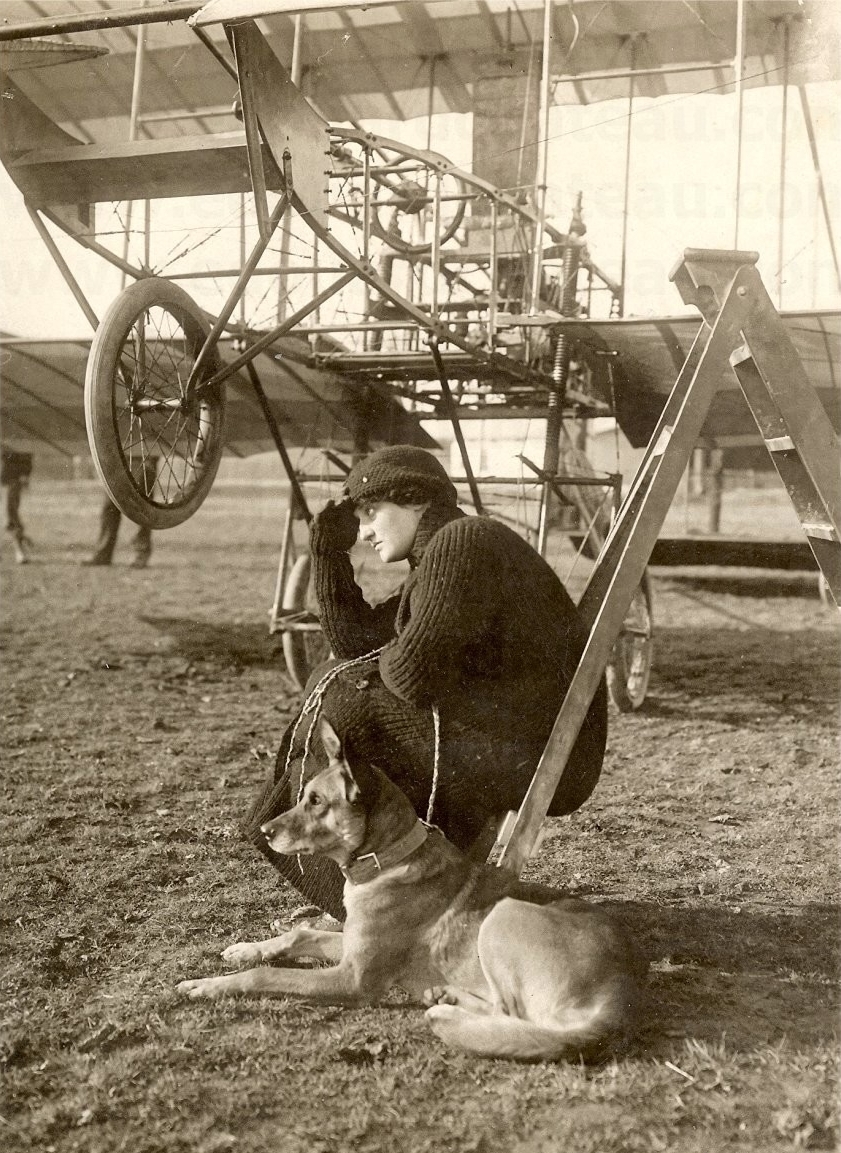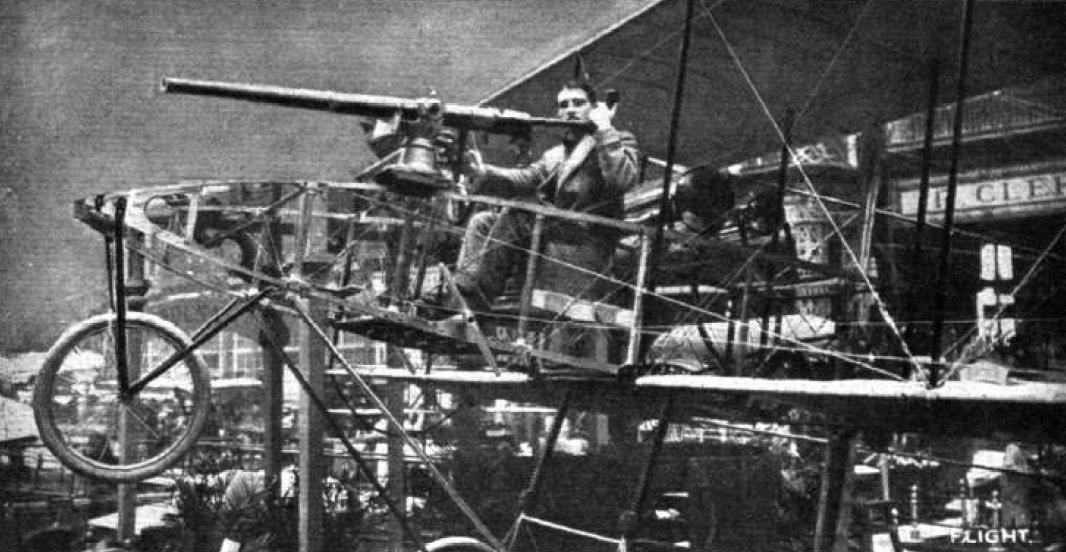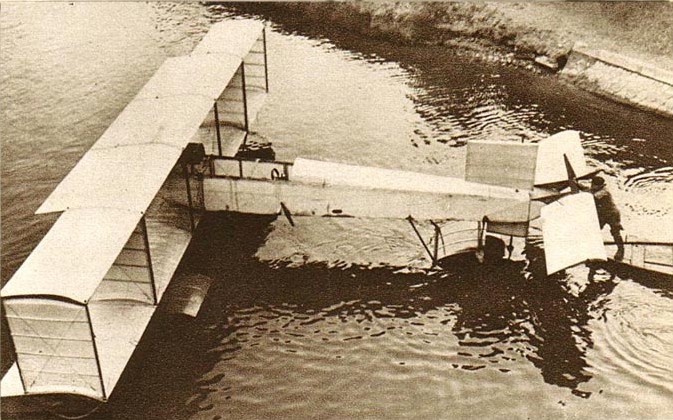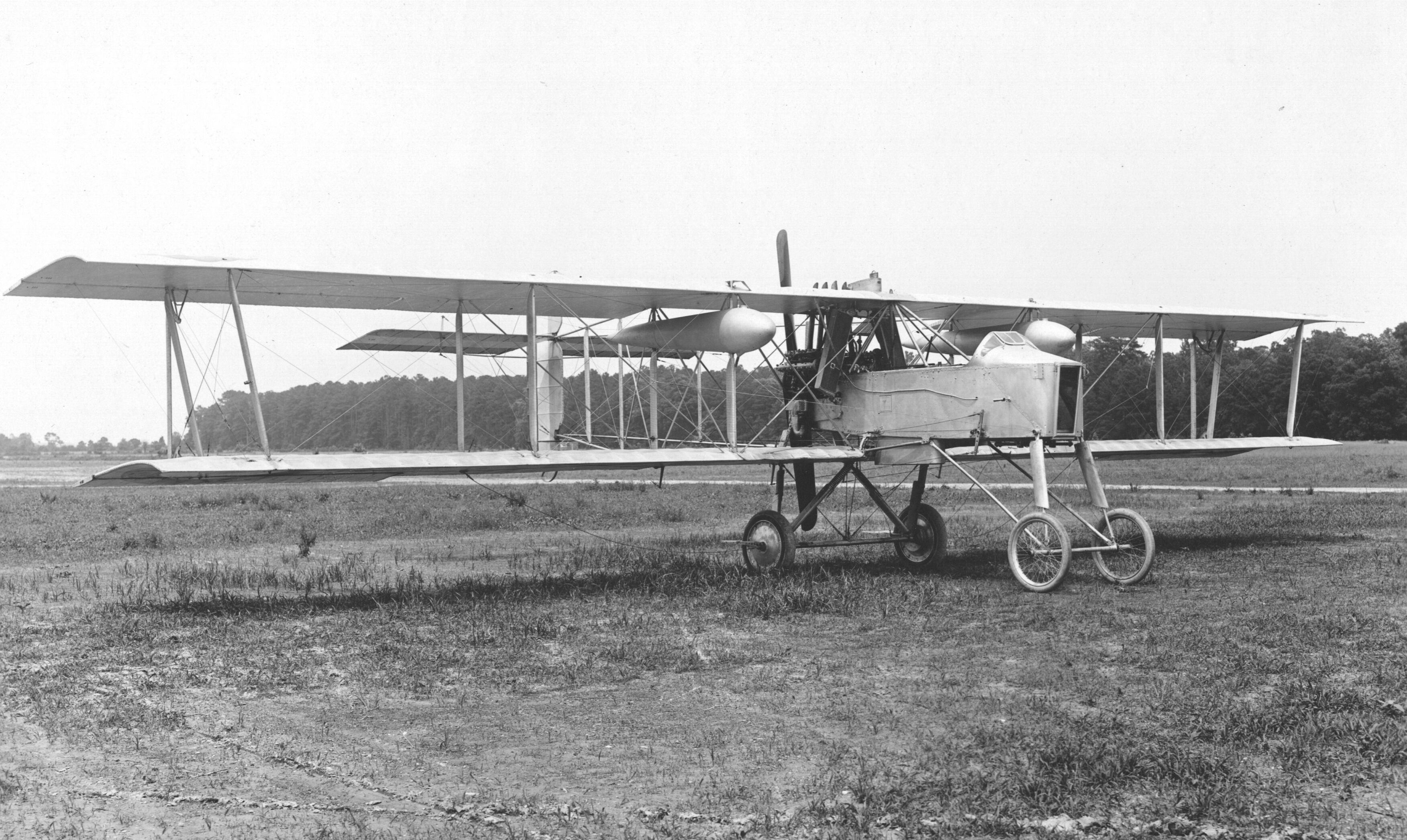Appareils D'Aviation Les Frères Voisin on:
[Wikipedia]
[Google]
[Amazon]
 Aéroplanes Voisin was a French
Aéroplanes Voisin was a French
 Gabriel Voisin had been employed by Ernest Archdeacon to work on the construction of gliders and then entered into partnership with Louis Blériot, to form the company ''Ateliers d' Aviation Edouard Surcouf, Blériot et Voisin'' in 1905. Following a disagreement, Gabriel Voisin bought out Blériot and on 5 November 1906 established the ''Appareils d'Aviation Les Frères Voisin'' with his brother Charles ( en, Flying Machines of Voisin Brothers). The company, based in the
Gabriel Voisin had been employed by Ernest Archdeacon to work on the construction of gliders and then entered into partnership with Louis Blériot, to form the company ''Ateliers d' Aviation Edouard Surcouf, Blériot et Voisin'' in 1905. Following a disagreement, Gabriel Voisin bought out Blériot and on 5 November 1906 established the ''Appareils d'Aviation Les Frères Voisin'' with his brother Charles ( en, Flying Machines of Voisin Brothers). The company, based in the

 *1907
*1907



 Production of the
Production of the
 Aéroplanes Voisin was a French
Aéroplanes Voisin was a French aircraft
An aircraft is a vehicle that is able to fly by gaining support from the air. It counters the force of gravity by using either static lift or by using the dynamic lift of an airfoil, or in a few cases the downward thrust from jet engine ...
manufacturing company established in 1905 by Gabriel Voisin
Gabriel Voisin (5 February 1880 – 25 December 1973) was a French aviation pioneer and the creator of Europe's first manned, engine-powered, heavier-than-air aircraft capable of a sustained (1 km), circular, controlled flight, which was made ...
and his brother Charles, and was continued by Gabriel after Charles died in an automobile accident in 1912; the full official company name then became ''Société Anonyme des Aéroplanes G. Voisin''Gunston, 1993, says the full name was "Aéroplanes G. Voisin". On the other hand the avions-voisin.org webpage specifies the name as "Société Aéroplanes Voisin, Société Anonyme". ( en, Aeroplanes Voisin public limited company
A public limited company (legally abbreviated to PLC or plc) is a type of public company under United Kingdom company law, some Commonwealth jurisdictions, and the Republic of Ireland. It is a limited liability company whose shares may be fre ...
).
During World War I
World War I (28 July 1914 11 November 1918), often abbreviated as WWI, was one of the deadliest global conflicts in history. Belligerents included much of Europe, the Russian Empire, the United States, and the Ottoman Empire, with fightin ...
, it was a major producer of military aircraft, notably the Voisin III
The Voisin III was a French World War I two-seat pusher biplane multi-purpose aircraft developed by Voisin in 1914 as a more powerful version of the 1912 Voisin I. It is notable for being the aircraft used for the first successful shooting dow ...
. After the war Gabriel Voisin abandoned the aviation industry, and set up a company to design and produce luxury automobiles, called Avions Voisin
Avions Voisin was a French luxury automobile brand established by Gabriel Voisin in 1919 which traded until 1939.
History
Gabriel B. Voisin was an aviation pioneer and manufacturer who in 1919 started producing cars using Knight-type sl ...
.
Early History
 Gabriel Voisin had been employed by Ernest Archdeacon to work on the construction of gliders and then entered into partnership with Louis Blériot, to form the company ''Ateliers d' Aviation Edouard Surcouf, Blériot et Voisin'' in 1905. Following a disagreement, Gabriel Voisin bought out Blériot and on 5 November 1906 established the ''Appareils d'Aviation Les Frères Voisin'' with his brother Charles ( en, Flying Machines of Voisin Brothers). The company, based in the
Gabriel Voisin had been employed by Ernest Archdeacon to work on the construction of gliders and then entered into partnership with Louis Blériot, to form the company ''Ateliers d' Aviation Edouard Surcouf, Blériot et Voisin'' in 1905. Following a disagreement, Gabriel Voisin bought out Blériot and on 5 November 1906 established the ''Appareils d'Aviation Les Frères Voisin'' with his brother Charles ( en, Flying Machines of Voisin Brothers). The company, based in the Paris
Paris () is the Capital city, capital and List of communes in France with over 20,000 inhabitants, most populous city of France, with an estimated population of 2,165,423 residents in 2019 in an area of more than 105 km² (41 sq mi), ma ...
ian suburb of Billancourt, was the first commercial aircraft factory in the world.
It created Europe's first manned, heavier-than-air powered aircraft capable of a sustained (1 km), circular, controlled flight, including take-off and landing, the Voisin-Farman I.
Having learned to fly with a Voisin, on 8 March 1910, Raymonde de Laroche
Raymonde de Laroche (22 August 1882 – 18 July 1919) was a French pilot, thought to be the first woman to pilot a plane. She became the world's first licensed female pilot on 8 March 1910.
She received the 36th aeroplane pilot's licence issue ...
became the first woman to receive a pilot licence when the Aéro-Club de France
The Aéro-Club de France () was founded as the Aéro-Club on 20 October 1898 as a society 'to encourage aerial locomotion' by Ernest Archdeacon, Léon Serpollet, Henri de la Valette, Jules Verne and his wife, André Michelin, Albert de Dion, ...
issued her licence #36.
In South Africa, on 28 December 1909, French aviator Albert Kimmerling
Albert Kimmerling, (22 June 1882 Saint-Rambert-l'Île-Barbe – 9 June 1912, Mourmelon, France) was a pioneer aviator who made the first airplane flight in Africa, taking off at the Nahoon Racetrack at East London, Eastern Cape. on 28 December 1 ...
made the first manned, heavier-than-air powered flight in Africa in a Voisin 1907 biplane
The 1907 Voisin biplane (designated the Voisin II by the 1913 edition of '' Jane's All the World's Aircraft''), was the first successful powered aircraft designed by aeronautical engineer and manufacturer Gabriel Voisin. It was used by the ...
.
Like many early aircraft companies, Voisin built machines to the designs of their customers which helped support their own experiments. The company's first customers were a M. Florencie, who commissioned them to build an ornithopter
An ornithopter (from Greek ''ornis, ornith-'' "bird" and ''pteron'' "wing") is an aircraft that flies by flapping its wings. Designers sought to imitate the flapping-wing flight of birds, bats, and insects. Though machines may differ in form, ...
he had designed, and Henri Kapferer, for whom they built a pusher biplane of their own design. The latter was underpowered, having a Buchet engine of only , and it failed to fly. However, Kapferer introduced them to Leon Delagrange
Leon, Léon (French) or León (Spanish) may refer to:
Places
Europe
* León, Spain, capital city of the Province of León
* Province of León, Spain
* Kingdom of León, an independent state in the Iberian Peninsula from 910 to 1230 and again fro ...
, for whom they built a similar machine, powered by a Antoinette
Antoinette is a given name, that is a diminutive feminine form of Antoine and Antonia (from Latin ''Antonius'').
People with the name include:
Nobles
* Antoinette de Maignelais, Baroness of Villequier by marriage (1434–1474), mistress of C ...
engine. This was first successfully flown by Charles Voisin on 30 March 1907, achieving a straight-line flight of . In turn Delagrange introduced them to Henri Farman
Henri Farman (26 May 1874– 17 July 1958) was a British-French aviator and aircraft designer and manufacturer with his brother Maurice Farman. Before dedicating himself to aviation he gained fame as a sportsman, specifically in cycling and moto ...
, who ordered an identical aircraft. These two aircraft are often referred to by their owners' names as the Voisin-Delagrange No.1marked on the side-curtains of the tail unit as Léon Delagrange No. 1 and the Voisin-Farman No.1,marked on the side-curtains of the tail unit as Henri Farman No. 1 and were the foundation of the company's success. On 13 January 1908 Farman used his aircraft to win the "Grand Prix de l'aviation" offered by Ernest Archdeacon and Henry Deutsch de la Meurthe
Henri Deutsch de la Meurthe (; 25 September 1846 – 24 November 1919), born Salomon Henry Deutsch, was a successful France, French petroleum businessman (known as the "Oil King of Europe"Howard, Fred, ''Wilbur & Orville: A Biography'', Dover Pu ...
for the first closed-circuit flight of over a kilometer. Since the Wright Brothers would provide no evidence of their own accomplishments, they were widely disbelieved at the time, so this was a major breakthrough in the conquest of the air, and brought Voisin many orders for similar aircraft. Around sixty would be built.
Major Designs of 1907-1914

 *1907
*1907 Voisin 1907 biplane
The 1907 Voisin biplane (designated the Voisin II by the 1913 edition of '' Jane's All the World's Aircraft''), was the first successful powered aircraft designed by aeronautical engineer and manufacturer Gabriel Voisin. It was used by the ...
*1909 Voisin Tractor
::Only one built.
*1910 Voisin Type de Course
*1910 Voisin Type Militaire
*1910 Type Bordeaux
*1911 Voisin Canard
The Voisin Canard was an aircraft developed by Voisin brothers during 1910 and first flown early in 1911. It was named the '' Canard'' because of the resemblance of its forward fuselage to that of a duck's long neck while in flight. It was origi ...
::Tail first pusher design initially flown as a landplane but later fitted with floats. Examples were sold to the French and Russia Navies.
* 1911 Type Tourism
*1912 Type Monaco
::Smaller version of the Canard floatplane. Two were built to take part in the 1912 Monaco Aero Meeting.
*1912 Voisin Icare Aero-Yacht
::Flying boat built for Henry Deutsch de la Meurthe
Henri Deutsch de la Meurthe (; 25 September 1846 – 24 November 1919), born Salomon Henry Deutsch, was a successful France, French petroleum businessman (known as the "Oil King of Europe"Howard, Fred, ''Wilbur & Orville: A Biography'', Dover Pu ...
with a six-wheeled boat hull suspended below the wings.
*1912 Voisin Type ''L'' or Voisin Type I & II
::A pod and boom pusher biplane developed for the French Army's 1912 trials. It performed successfully, and some seventy were built in France, and a small number in Russia
Russia (, , ), or the Russian Federation, is a transcontinental country spanning Eastern Europe and Northern Asia. It is the largest country in the world, with its internationally recognised territory covering , and encompassing one-eig ...
*1913 Voisin Canon
::Six wheeled triple tailed pod and boom pusher armed with a 37mm Hotchkiss cannon
*1914 Type ''LA'' or Voisin III
The Voisin III was a French World War I two-seat pusher biplane multi-purpose aircraft developed by Voisin in 1914 as a more powerful version of the 1912 Voisin I. It is notable for being the aircraft used for the first successful shooting dow ...
::Development of the ''L'' with detail improvements but of the same general configuration.
Voisin designs in World War I



 Production of the
Production of the Voisin III
The Voisin III was a French World War I two-seat pusher biplane multi-purpose aircraft developed by Voisin in 1914 as a more powerful version of the 1912 Voisin I. It is notable for being the aircraft used for the first successful shooting dow ...
''Type LA'' and ''LAS'' increased with the outbreak of the First World War
World War I (28 July 1914 11 November 1918), often abbreviated as WWI, was one of the deadliest global conflicts in history. Belligerents included much of Europe, the Russian Empire, the United States, and the Ottoman Empire, with fightin ...
, with examples being built under licence in Italy by S.I.T., in Russia by Anatra, Breshnev-Moller, Dux Lebedev and Schetinin, and in the UK by Savages of King's Lynn, with production exceeding 1,350 airframes. Examples would also be used by the Belgian and Romanian Air Services, and a few even survived the war to be used in the Ukraine, and in Russia. Soon after the outbreak of the First World War, it became apparent that the French aviation industry could not produce aircraft in sufficient numbers to meet military requirements. Manufacturers from various other fields became aviation subcontractors, and later license-builders as did many smaller aircraft manufacturers who had been unable to secure orders for their own designs. By 1918, Voisin was involved with the Voisin-Lafresnaye company, a major constructor of airframes, and the Voisin-Lefebvre company, a major builder of aircraft engines.
The Voisin III was followed by a small number of the 37mm cannon armed Voisin IV ''Type LB'' and ''Type LBS''. The ''B'' in the factory designations indicate that the airframe was equipped with a cannon, although some had it removed in service. The ''S'' indicates that the engine was raised (surélevé) compared to the original installation.
Three hundred of the improved Voisin V ''Type LAS'' aircraft followed.
The Voisin VI ''Type LAS'' was a development of the V fitted with a Salmson radial, of which only around 50 were built despite the improved performance as the basic type was considered to be obsolete.
The larger ''Type LC'', Voisin VII
The Voisin VII was a French reconnaissance pusher biplane aircraft of World War I.
Design
The Voisin VII was a biplane with a single engine in a pusher configuration, developed by Voisin in 1916 as an enlarged Voisin V with the engine cooling ...
, followed in 1916 with the engine cooling radiators moved to the nose, but was not a success as it was badly underpowered and only a hundred of these were built.
Voisin built a large Triplane
A triplane is a fixed-wing aircraft equipped with three vertically stacked wing planes. Tailplanes and canard foreplanes are not normally included in this count, although they occasionally are.
Design principles
The triplane arrangement m ...
powered by four Salmson water-cooled aero-engines
The Salmson water-cooled aero-engines, produced in France by Société des Moteurs Salmson from 1908 until 1920, were a series of pioneering aero-engines: unusually combining water-cooling with the radial arrangement of their cylinders.
Histor ...
in 1915 with twin superimposed fuselage booms, however it attracted no orders, but its wings were reused in 1916 for the E.28 triplane bomber which was now powered by four V8 Hispano-Suiza 8B engines, which likewise failed to secure any orders.
Also in 1915, Voisin built the '' Type M'' in which the fuselage was below the lower wing, and the engine filled the gap between the wings, however neither it, nor the otherwise similar twin fuselage '' Type O'' were successful.
Following the Voisin VII came the more powerful, and more successful Voisin VIII ''Type LAP'' and ''Type LBP''. This was the French army's main night bomber in 1916 and 1917, with over one thousand built.
The Voisin IX, or ''Type LC'' (the designation was reused), was an unsuccessful lightened development of the VIII for a reconnaissance aeroplane, which lost out to the Salmson 2 and Breguet 14 Breguet or Bréguet may refer to:
* Breguet (watch), watch manufacturer
**Abraham-Louis Breguet (1747–1823), Swiss watchmaker
**Louis-François-Clement Breguet (1804–1883), French physicist, watchmaker, electrical and telegraph work
* Bréguet ...
.
The Voisin X, ''Type LAR'' and ''Type LBR'', was the Voisin VIII with a more reliable, lighter and more powerful Renault
Groupe Renault ( , , , also known as the Renault Group in English; legally Renault S.A.) is a French multinational automobile manufacturer established in 1899. The company produces a range of cars and vans, and in the past has manufacture ...
12Fe engine in place of the Peugeot
Peugeot (, , ) is a French brand of automobiles owned by Stellantis.
The family business that preceded the current Peugeot companies was founded in 1810, with a steel foundry that soon started making hand tools and kitchen equipment, and the ...
8Aa used on the VIII. Deliveries were severely delayed, but some nine hundred were built before the end of the war. In 1918, a Voisin X (No. 3500) was used to create the Voisin 'Aerochir' ('Ambulance'). The aircraft was capable of flying a surgeon, together with an operating table and support equipment, including an x-ray
An X-ray, or, much less commonly, X-radiation, is a penetrating form of high-energy electromagnetic radiation. Most X-rays have a wavelength ranging from 10 picometers to 10 nanometers, corresponding to frequencies in the range 30&nb ...
machine and autoclave
An autoclave is a machine used to carry out industrial and scientific processes requiring elevated temperature and pressure in relation to ambient pressure and/or temperature. Autoclaves are used before surgical procedures to perform sterilizati ...
, into the battlefield. Under-wing pannier
A pannier is a basket, bag, box, or similar container, carried in pairs either slung over the back of a beast of burden, or attached to the sides of a bicycle or motorcycle. The term derives from a Middle English borrowing of the Old French '' ...
s could be carry of equipment. Another X was converted into a drone, and flown in 1918 and again in 1923.
The Voisin XI was a development of the X powered by a Panhard
Panhard was a French motor vehicle manufacturer that began as one of the first makers of automobiles. It was a manufacturer of light tactical and military vehicles. Its final incarnation, now owned by Renault Trucks Defense, was formed ...
12Bc, with a slightly longer wingspan and assorted detail changes. Only about 10 were built and it did not see service.
The final Voisin design, the Voisin XII, was successful in trials in 1918 for the BN2 bomber competition, but with the end of the war, no production was ordered. The Voisin XII was a large, four-engined biplane night bomber. Several projects for heavy bombers for the next bomber specification (BN3/4) may have been based on the XII, but fitted with larger Salmson or Hispano-Suiza engines, but were not built.Davilla p.569
In the 1930s, a glider was built by a Louis Voisin, however he had no connection to Gabriel Voisin.
Post World War I
After 1918, Gabriel Voisin abandoned the aviation industry in favor of automobile construction under the nameAvions Voisin
Avions Voisin was a French luxury automobile brand established by Gabriel Voisin in 1919 which traded until 1939.
History
Gabriel B. Voisin was an aviation pioneer and manufacturer who in 1919 started producing cars using Knight-type sl ...
.
Notes
References
Bibliography
* Carlier, Claude, ''Sera Maître du Monde, qui sera Maître de l'Air: La Création de l'Aviation militaire française.'' Paris: Economica/ISC, 2004. * Davilla, James J., & Soltan, Arthur M., ''French Aircraft of the First World War.'' Stratford, Connecticut: Flying Machines Press, 1997. * Lacaze, Henri, ''Les Aéroplanes Voisin'', ''Collection Histoire de L'Aviation N°39.'' Paris:LELA PRESSE, 2018. * Opdycke, Leonard E ''French Aeroplanes Before the Great War'' Atglen, PA: Schiffer, 1999 * Voisin, Gabriel, ''Mes 10,000 Cerfs-volants'', Editions La Table Ronde, Paris, 1960. * ( Italy ) Grassani, Enrico "''Elisa Deroche alias Raymonde de Laroche. La presenza femminile negli anni pionieristici dell'aviazione''" Editoriale Delfino, Milano 2015. {{Authority control Defunct aircraft manufacturers of France Manufacturing companies established in 1906 Manufacturing companies disestablished in 1918 French companies established in 1906 1918 disestablishments in France